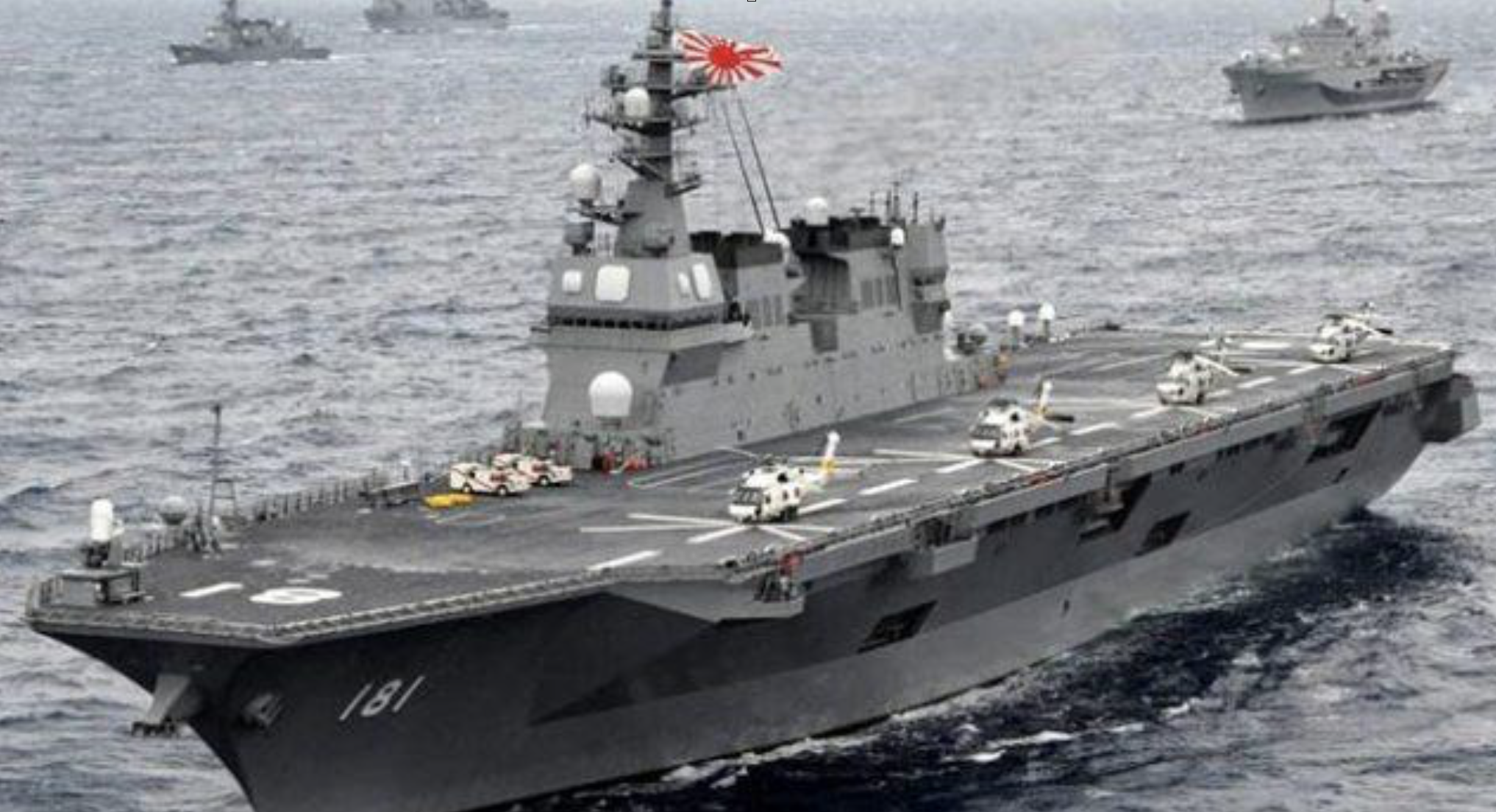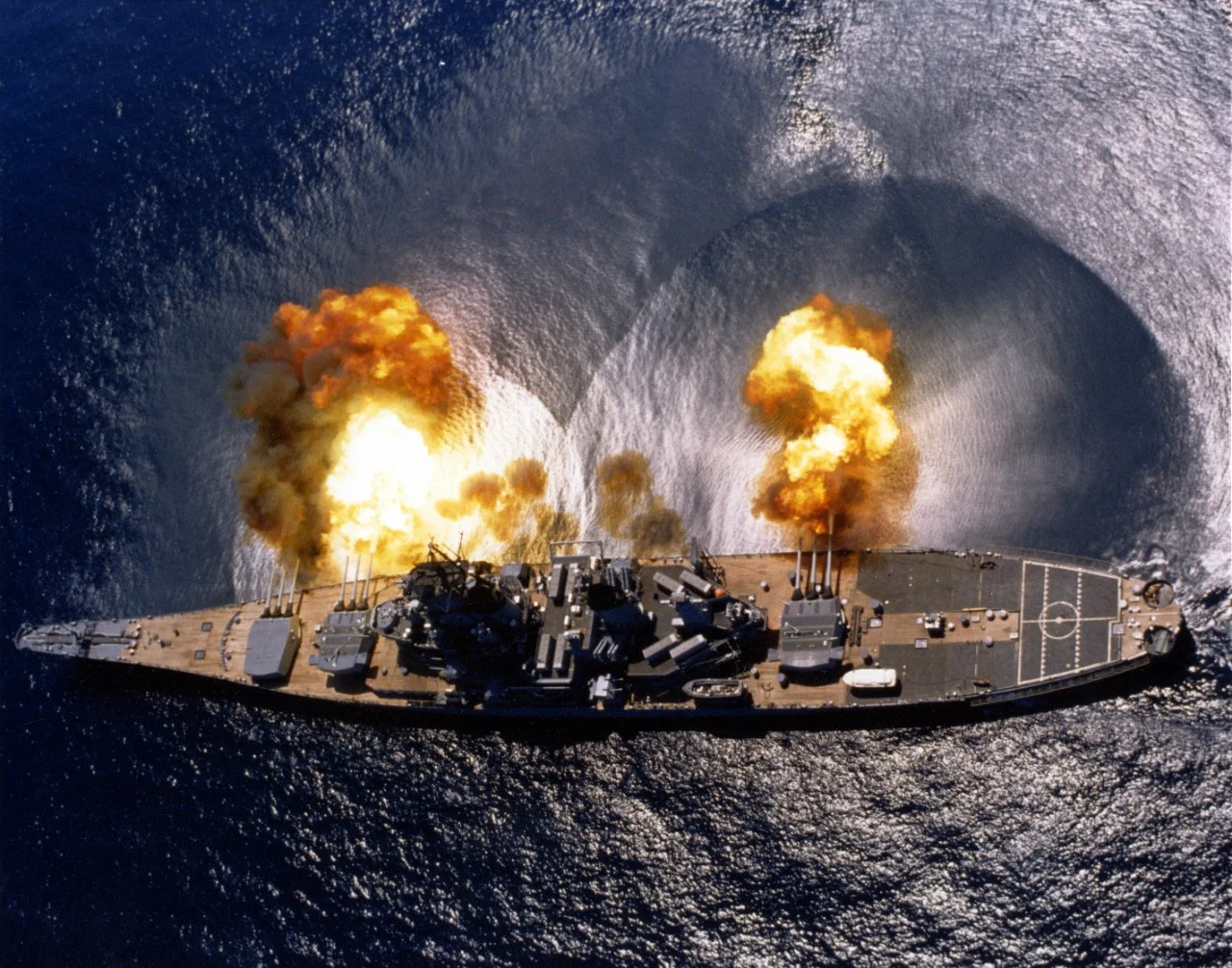That’s a destroyer?
The warship classification of “destroyer” seems a very fungible term. The Iranian press has referred to their 1,500 ton Moudge class as a destroyer. The United States currently has 8-9,000 ton ARLEIGH BURKEs and the 14,000 ton ZUMWALT classified as destroyers. China is currently constructing the Type 055 destroyer, expected to displace 14,000 tons. Japan has the 24,000 ton IZUMO “helicopter destroyer” which, with a full length flight deck seems far more like an aircraft carrier. For comparison, the Russian SLAVA class and US TICONDEROGA class cruisers are around 10,000 tons, the “Heavy guided missile cruiser” KIROV is around 25,000 tons and the KUNETSOV “heavy aircraft carrying cruiser” (which operates fixed wing fighters from a full length flight deck, just like an aircraft carrier) is over 60,000 tons. So, what the heck is a destroyer, or a cruiser for that matter, these days?
Warship classification was once more simple, and constantly evolving. First rate ships were referred to as “ships of the line” and expected to form the main line of battle in a decisive surface engagement. These ships of the line evolved over time to become “battleships”. Second rate ships were frigates, capable of fighting in the line but also for scouting, patrolling and escort. The classification went down in ratings to less and less powerful vessels. Over time, the displacement of these vessels grew larger and larger. Pre-Dreadnaught cruisers and battleships were smaller than post dreadnaught designs. World War 1 battleships were smaller than London Naval Treaty battleships… and when nations chose to not follow the treaty, became significantly larger as epitomized by Japan’s YAMATO class, the US’s IOWA and planned MONTANA design.
Destroyers came about to protect these battleships against the asymmetric threat of small torpedo boats that might otherwise threaten the larger ships of the line. Torpedoes presented a new threat for heavily armed surface vessels especially steaming in linear formations or at anchor. The title “torpedo boat destroyer” was shortened to the simple “destroyer.” By World War I, destroyer’s main job was to screen the friendly force, scout out the enemy, and attack enemy ships with torpedoes while preventing torpedo attacks upon their own side. In World War II, defending against submarines, the ultimate torpedo boats, was added to their mission set.
Before World War II, in the London Naval Treaty, destroyers were codified as being less than 1,850 tons and with no armament above 5.1 inch (130mm) caliber. Cruisers were larger than that in displacement and allowed to have guns between 6in and 8in caliber. In the Washington Naval treaty, capital ships were vessels, not aircraft carriers, greater than 10,000 tons and with guns in excess of 8in (203mm) caliber. These were the battleships. Thus, ship classification was based on technical criteria of size and armament as opposed to the missions designed for. These distinctions didn’t even survive the war, with the iconic US FLETCHER and US GEARING class destroyers weighing in well over the “destroyer” treaty definition, the ATLANTA class starting as “destroyer leaders” and being reclassified as anti-aircraft cruisers, and the French LE FANTASQUE destroyers exceeding the limits in both tonnage and gun caliber. Other examples would be the German DEUTSCHLAND class or US ALASKA class which were capital ships by tonnage and gun caliber, but classified as cruisers instead of capital ships.
With the end of World War II, battleships and cruisers, by treaty definition, were not constructed and phased out. From the 50s to 1975, the only US cruisers were World War II leftovers. What the US Navy had were three types of escorts: frigates/destroyer leaders (DL/DLG/DLGN), destroyers (DD/DDG) and ocean escorts (DE/DEG). In 1975 the US Navy decided to reclassify the escorts. Most of the frigates and destroyer leaders became cruisers (CG/CGN) but some became destroyers based on size and not being a primary aircraft carrier escort. Destroyers remained the same, but ocean escorts became the new frigates (FF/FFG) but even this distinction is hazy since some frigates (KNOX class) were larger than destroyers (FARRAGUT class) and there was considerable overlap in their weapons capabilities. The distinction between a destroyer and frigate seemed to be speed, with frigates having slightly slower top speeds.
Current major military references don’t even agree on ship classifications. Jane’s Fighting Ships does not define ship classifications. Combat Fleets of the World does, defining cruisers as having major command and control capabilities, destroyers as being similar but lacking these additional capabilities, and frigates as being generally smaller than destroyers and generally focused on a single warfare area. Combat Fleets of the World, however, recognizes that these distinctions were blurred with some frigates being multi-mission capable and larger than destroyers, and the size ranges of cruisers (5,000-27,000 tons) destroyers (4,000 to 10,000 tons) and frigates (1,500-6,000 tons) all overlapping. The IISS Military Balance uses similar breakpoints, but has cruisers as being larger than 9,750 tons, destroyers larger than 4,500 tons, and frigates larger than 1,500 tons. The Military Balance doesn’t further explain the distinctions between these ship types.
Additionally, these references disagree with their own classification systems and each other when designating ships. The USS ZULWALT, called a DDG by the US Navy, is a CGHM (Cruiser, Guided Missile, Hanger Facilities, Anti Ship missiles) by The Military Balance 2015, a DDGH by Jane’s Fighting Ships 2016-2017, and a DDG by Combat Fleets of the World 16th Edition (2013). Combat Fleets calls ZUMWALT a destroyer despite the fact that she has the advanced command and control capabilities that Combat Fleets uses as the difference between a cruiser and destroyer. The US LCS program ships are frigates in The Military Balance and Jane’s, and “patrol vessels” in Combat Fleets of the World. Jane’s classifies Japan’s large helicopter destroyers of the IZUMO and HYUGA classes as helicopter carriers, but Combat Fleets accepts the Japanese title of destroyer.
Former Deputy Secretary of Defense Robert Work, in a 2005 Center for Strategic and Budgetary Assessments (CSBA) report, proposed a modern combat rating system harkening back to the age of sail, with ships designated from “First Rate” (battleships) with 100 or more missiles, to “Fifth Rate” (Frigates) with 20-47 missiles, down to “Seventh Rate frigates” which are single role warships with only terminal air defenses. Under this system, the world’s only cruisers (and a few destroyers) would be reclassified as first rate battleships, most US destroyers as 2nd rate, and cascading down from there. However, this system was never adopted.
So, what is in a name? What is a “Destroyer?” Well, to use long defunct treaty definitions, the Iranian press has it right: Moudge is a destroyer by size and armament. No other common, official classification guidance seems to apply, making classification a political statement rather than a reflection of a ships size, armament, or capabilities. ZUMWALT is a destroyer to the US because the program was started as a destroyer, and a cruiser as a planned evolution of it (that now appears unlikely to happen). This could be compared to how the SPRUANCE destroyer hull formed the foundation for the TICONDEROGA class cruiser (which was originally a DLG). For the KUNETSOV, it is classified by Russia as an aircraft carrying cruiser to get around the Montreux Convention which limits what vessels can transit the Dardanelles. While the convention itself does not ban aircraft carriers, the official Turkish interpretation of it does. US, UK and French carriers, operated by NATO allies are banned… but as a “cruiser”, the KUNETSOV can pass through the straits connecting the Black Sea to the Mediterranean. This was vitally important since she was built at a shipyard inside the Black Sea.
Japan’s helicopter destroyers are also not called carriers for political reasons. Article 9 of the Japanese Constitution renounces war and maintaining war materials. This has been interpreted that self-defense of Japan is legal under the constitution, allowed Japan to have “self-defense forces”. However, aircraft carriers are considered platforms to project military power, something incompatible with Japan’s constitution. Thus, the large vessels with full length flight decks supporting multiple helicopters are destroyers, not aircraft carriers, at least according to the Japanese.
So, classifications of modern warships are motivated more by politics that any official system or pattern. Indeed, the patterns that existed in the past reflect those times, and those times alone. Today, “destroyers” are both escorts for more valuable ships, but also operate independently like frigates of the age of sail as well as like the cruisers of the World Wars. Destroyers form Surface Action Groups with embarked staffs, yet none classified as a cruiser. Thus, does a cruiser, not a cruiser called, not retain the dear perfection which it is owed?









